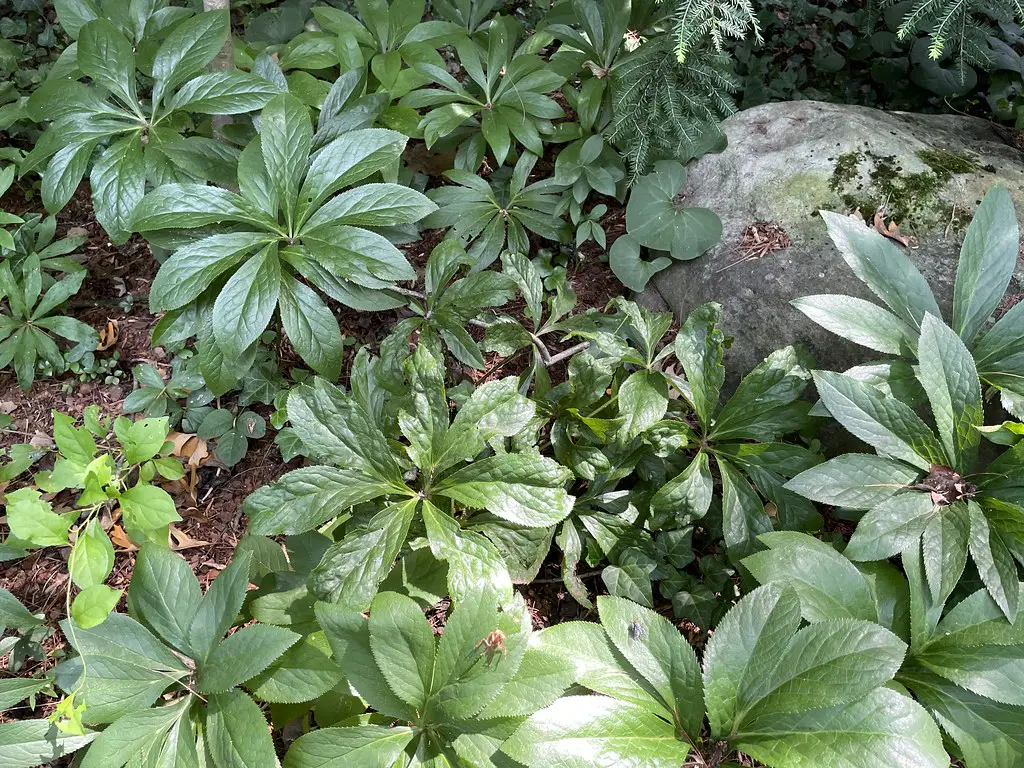Black Death of Hellebores is a perplexing and devastating disease that can swiftly ruin the appearance of these attractive perennial flowers. Also known as Hellebore net necrosis virus (HeNNV), the disease leads to symptoms that are not only aesthetically displeasing but can also lead to the decline of the affected plant. This in-depth blog post explores the characteristics, symptoms, transmission, impact, and management of Black Death in Hellebores.
Introduction to Hellebores
Hellebores, belonging to the genus Helleborus, are popular perennials in many gardens due to their early blooming and shade tolerance. They are often admired for their lovely, nodding flowers that bloom in late winter to early spring.
Black Death of Hellebores: An Overview
Virus Identification
Black Death is caused by a virus, specifically Hellebore net necrosis virus (HeNNV), which is a Carlavirus.
Symptoms
The disease manifests through a range of symptoms that often resemble a severe nutrient deficiency or other viral diseases. These include:
- Black Streaking: Dark, black streaks appear on stems, followed by leaf petioles and veins.
- Leaf Mottling: Leaves may display mottling or net-like patterns of dark discoloration.
- Flower Deformation: Affected flowers may become distorted, streaked, or spotted.
- Stunted Growth: The overall growth of the plant may be stunted, leading to a decline in vigor.
Transmission of the Virus
The exact modes of transmission for Black Death of Hellebores are still not well understood, but some possible methods include:
- Mechanical Transmission: Pruning tools or hands contaminated with the virus might spread it to healthy plants.
- Insect Vectors: Although not confirmed, some aphids and other sap-sucking insects might serve as vectors for the disease.
- Infected Plant Material: Planting infected hellebores, whether knowingly or unknowingly, can introduce the virus into the garden.
Impact on Hellebores
- Aesthetic Damage: The disease mars the appearance of hellebores, reducing their ornamental value.
- Decline in Health: Chronic infection may lead to a decline in the overall health and vigor of the plant, possibly leading to death.
Management and Control
Though there is no cure for the virus, certain strategies can mitigate its impact:
Early Detection and Removal
Careful monitoring for signs of Black Death and prompt removal and destruction of infected plants can prevent the spread of the disease.
Sanitation
Cleaning tools and hands between working with different plants can reduce the risk of mechanical transmission.
Careful Plant Selection
Purchasing hellebores from reputable sources that guarantee virus-free plants is an essential preventive measure.
Maintaining Plant Health
Healthy plants are generally more resistant to diseases, so proper watering, fertilization, and pruning practices can help prevent infection.
Conclusion
Black Death of Hellebores is a disconcerting disease that poses a real threat to lovers of these beautiful perennials. While the lack of a cure and limited understanding of the virus’s transmission can make it seem like a daunting challenge, awareness, vigilance, and proper gardening practices can minimize its impact.
Investigations into the virus and its transmission mechanisms continue, and gardeners must stay informed and proactive to protect their beloved hellebores from this menacing disease. The collaboration between researchers, nursery professionals, and home gardeners can foster a better understanding of this complex problem and lead to more effective control strategies.
In the meantime, a watchful eye, swift action, and adherence to good gardening principles offer the best defense against this disease that turns the beauty of hellebores into a gardener’s nightmare.

